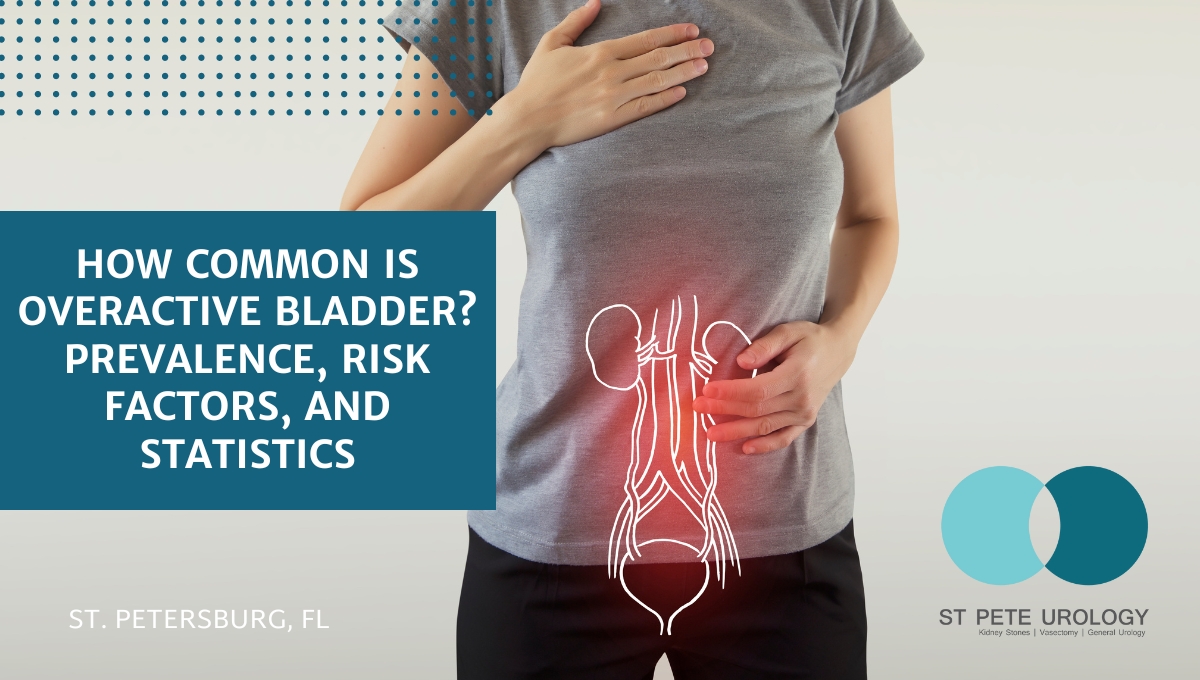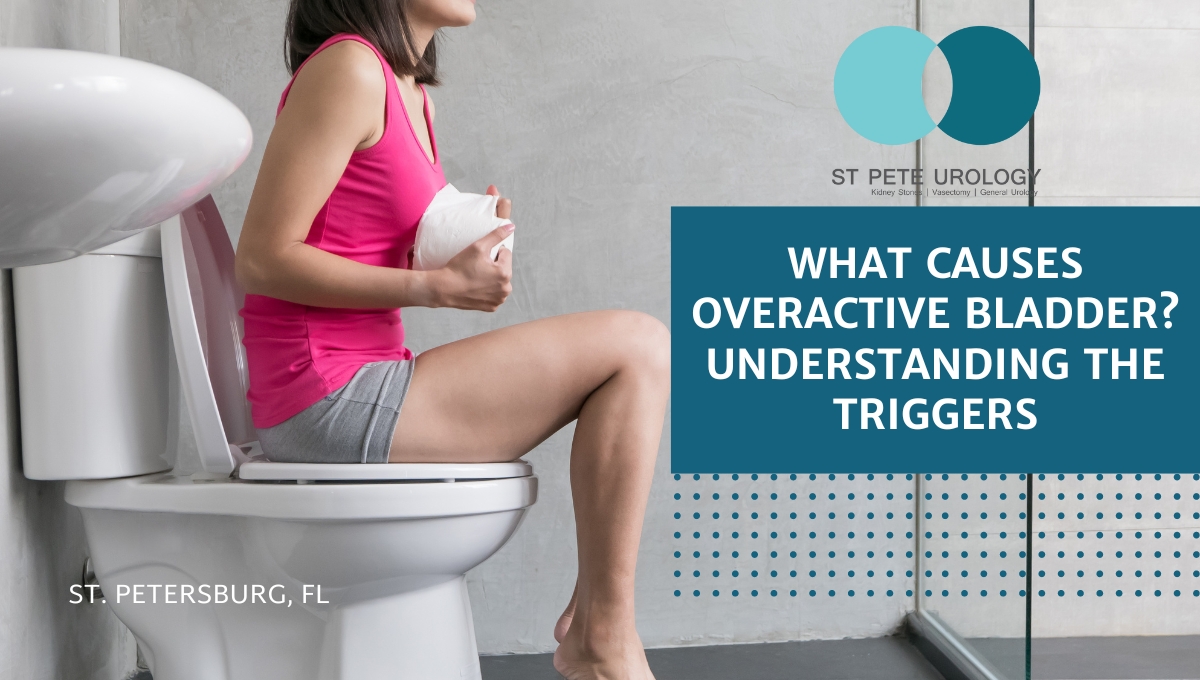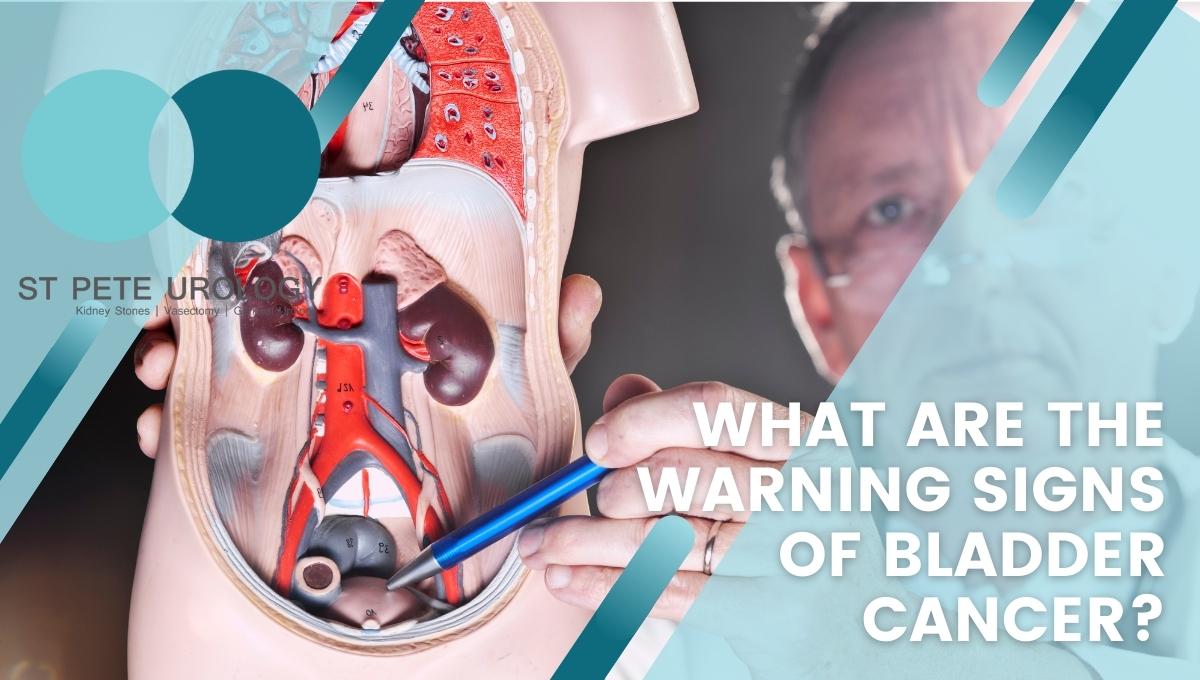3 Key Takeaways:
1. Overactive bladder (OAB) is a common urological condition characterized by frequent, urgent urination and disruption of day-to-day life.
2. Risk factors for developing OAB include age, gender, obesity and certain medications.
3. Early diagnosis and treatment for OAB can mitigate symptoms and improve quality of life, and St. Pete Urology can provide high-quality, individualized care for those suffering from OAB.
 Overactive bladder (OAB) is a urological condition characterized by a sudden, uncontrollable, and frequent urge to urinate. People with OAB may find themselves unable to control their urge to urinate. This can cause issues with daily routines, social activities, emotional wellbeing, and ultimately lead to a decreased quality of life. This article will explore the prevalence, risk factors, and statistics associated with OAB.
Overactive bladder (OAB) is a urological condition characterized by a sudden, uncontrollable, and frequent urge to urinate. People with OAB may find themselves unable to control their urge to urinate. This can cause issues with daily routines, social activities, emotional wellbeing, and ultimately lead to a decreased quality of life. This article will explore the prevalence, risk factors, and statistics associated with OAB.
Prevalence of OAB
According to Statistic Brain, an estimated 183 million people suffer from OAB globally. Regionally, the prevalence of OAB is highest in North America, with an estimated 66.6 million people in the U.S. are currently experiencing OAB symptoms. The global and regional prevalence of OAB is largely influenced by a range of environmental and demographic factors. These factors include the aging population, rising global health awareness, sedentary lifestyle choices, and shifts in healthcare policies.
Risk Factors for OAB
There are a number of risk factors that may increase the likelihood of developing OAB. These include age, gender, obesity, urinary tract infections, strokes and other neurological diseases, diabetes, and certain medications. Studies have shown that women are more likely to experience OAB than men, with the risk increasing with age for both genders. Additionally, there is a strong correlation between obesity and OAB, with obese individuals having a higher risk of developing OAB.
Symptoms and Impact of OAB
The primary symptoms of OAB include frequent urge to urinate, urgent urination, frequent urination, and nocturia (nighttime urination). These symptoms can cause disruption in daily life, leading to difficulties with social activities, work, and maintaining relationships. Additionally, OAB can cause emotional and mental distress, leading to anxiety, embarrassment, and depression.
Diagnosis of OAB
OAB can be effectively diagnosed with a variety of tests and procedures, including physical examinations, urine tests, urine flow tests, and bladder scans. It is important to seek early diagnosis and treatment for OAB, as this can help minimize the disruption caused by the condition.
Treatment and Management of OAB
The treatment and management of OAB will depend on the individual patient, with a range of options available, including lifestyle changes, medications, bladder training, and physical therapy. It is important to discuss treatment options with a healthcare professional, as some medications may not be suitable for all patients. Additionally, lifestyle changes and self-management strategies can help to mitigate the symptoms of OAB and improve the quality of life.
Conclusion
Overactive bladder is a common urological condition characterized by frequent, urgent urination and disruption of day-to-day life. It is important to be aware of the prevalence, risk factors, and statistics associated with OAB. Key risk factors for developing OAB include age, gender, obesity, and certain medications. It is important to seek early diagnosis and treatment for OAB, as this can help to reduce the symptoms and improve the overall quality of life.
At St. Pete Urology, we strive to provide high-quality, individualized care for those suffering from common urological conditions such as overactive bladder. With our comprehensive and comprehensive approach, you can trust us to provide you with the most effective solutions for your OAB symptoms. Contact us today to schedule an appointment and get on the path to feeling your best!
References:
- “Incontinence Types & Risk Factors – Brigham and Women’s Hospital.” https://www.brighamandwomens.org/obgyn/urogynecology/types-of-incontinence-and-risk-factors.
- “Overactive bladder – Diagnosis and treatment – Mayo Clinic.” 3 May. 2022, https://www.mayoclinic.org/diseases-conditions/overactive-bladder/diagnosis-treatment/drc-20355721.
- “Urinary Incontinence risk factors – Hospital Clínic Barcelona.” 20 Feb. 2018, https://www.clinicbarcelona.org/en/assistance/diseases/urinary-incontinence/risk-factors.



 Exercise is essential to maintaining good physical and mental health. Regular physical activity can reduce the risk of heart disease, diabetes, stroke, and mental health problems. Exercise can also improve bowel and bladder health, but this is not always the case.
Exercise is essential to maintaining good physical and mental health. Regular physical activity can reduce the risk of heart disease, diabetes, stroke, and mental health problems. Exercise can also improve bowel and bladder health, but this is not always the case. 
 Overactive bladder is a condition that affects many people, and the effects can be very uncomfortable. It is important to understand potential dietary causes for your OAB and learn about foods that you can eat to help improve your bladder health. In this article, we will discuss what an overactive bladder is, potential causes, diet tips, and foods to avoid to improve your bladder health.
Overactive bladder is a condition that affects many people, and the effects can be very uncomfortable. It is important to understand potential dietary causes for your OAB and learn about foods that you can eat to help improve your bladder health. In this article, we will discuss what an overactive bladder is, potential causes, diet tips, and foods to avoid to improve your bladder health.
 For anyone suffering from the frequent, sudden, and uncontrollable need to urinate, what causes
For anyone suffering from the frequent, sudden, and uncontrollable need to urinate, what causes 
 Your urinary system often reflects your overall health.
Your urinary system often reflects your overall health. 

 Because the bladder holds urine produced by the kidneys, the warning signs of bladder cancer usually relate to urination. Urine is made in the kidneys and moves down the ureters to the bladder, which then stores the urine to allow for an infrequent, controlled urination.
Because the bladder holds urine produced by the kidneys, the warning signs of bladder cancer usually relate to urination. Urine is made in the kidneys and moves down the ureters to the bladder, which then stores the urine to allow for an infrequent, controlled urination.

 Kegel exercises are for strengthening pelvic floor muscles. They involve contracting and relaxing, clenching and releasing those muscles. Also called pelvic floor exercises, Kegels strengthen and coordinate the muscles that support the bladder, rectum, uterus and small intestines. The strengthening, in turn, helps to prevent the accidental passing of stool or gas, stops bladder leaks, and improves orgasm.
Kegel exercises are for strengthening pelvic floor muscles. They involve contracting and relaxing, clenching and releasing those muscles. Also called pelvic floor exercises, Kegels strengthen and coordinate the muscles that support the bladder, rectum, uterus and small intestines. The strengthening, in turn, helps to prevent the accidental passing of stool or gas, stops bladder leaks, and improves orgasm.